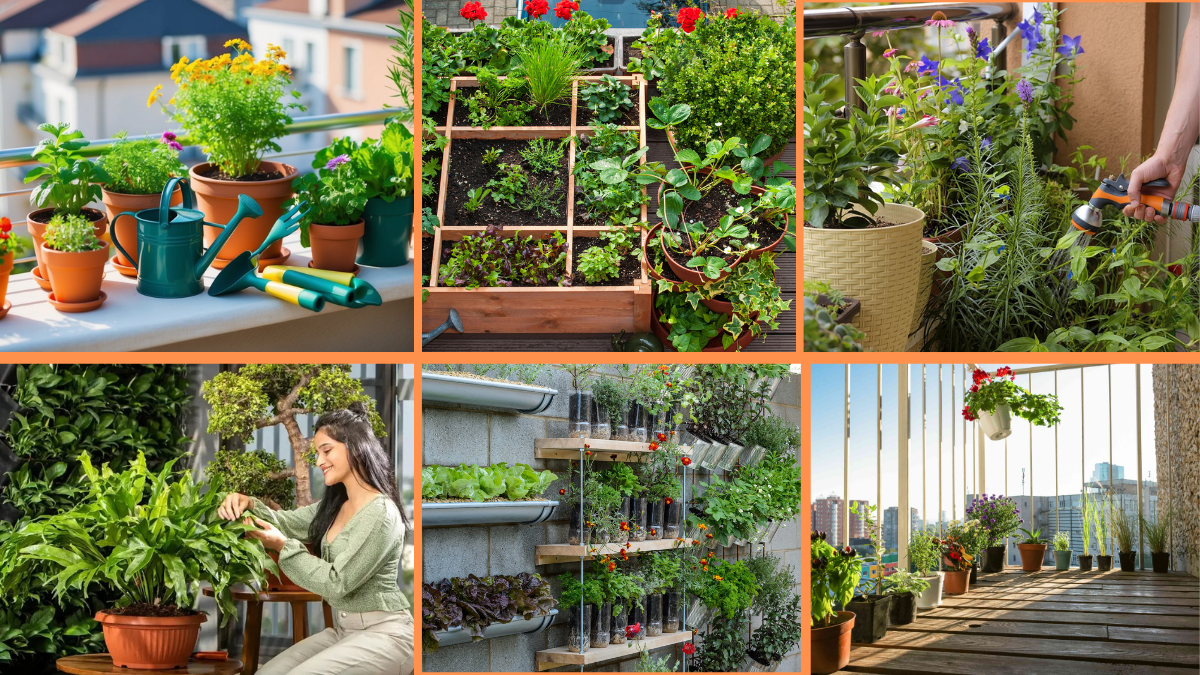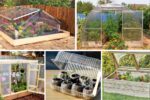Living in a city or a compact apartment doesn’t mean you have to give up your dream of having a lush, green space. A balcony garden is the perfect solution for adding a touch of nature to your home, no matter how small your outdoor space might be. From fragrant herbs and colorful flowers to fresh vegetables and trailing vines, you can turn even the tiniest balcony into a vibrant green retreat.
Whether you have a sun-soaked terrace or a cozy shaded balcony, this guide will show you how to start growing your very own balcony garden with ease. Let’s dig in!
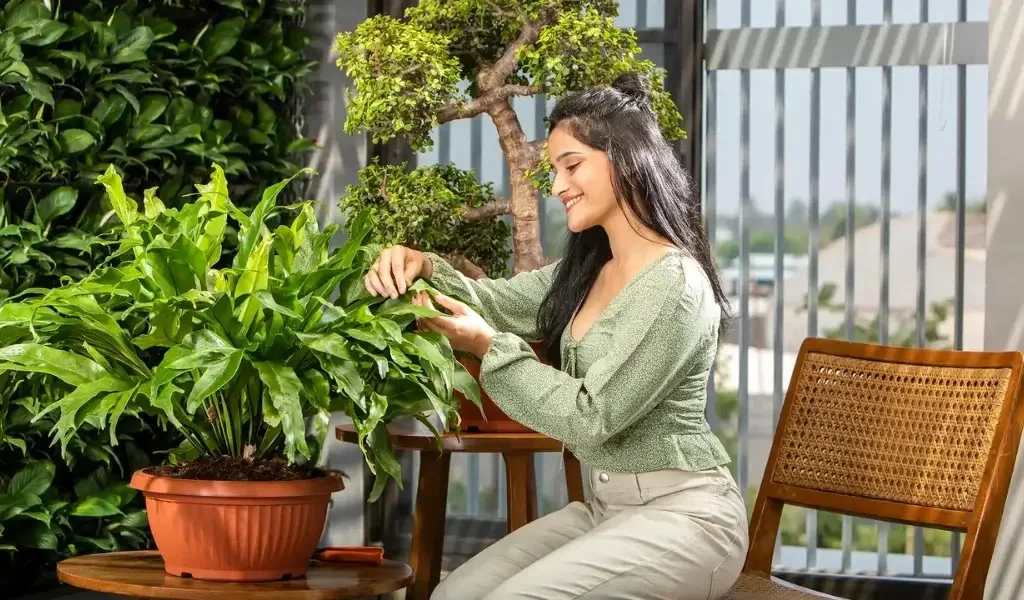
Why Start a Balcony Garden?
Before getting your hands dirty, it’s good to know why balcony gardening is a great idea:
- Adds beauty and greenery to your urban living space.
- Provides fresh herbs, vegetables, and flowers right at your doorstep.
- Improves air quality and reduces urban heat.
- Creates a relaxing, stress-relieving environment.
- Encourages sustainable, eco-friendly living even in high-rise apartments.
Step 1: Assess Your Balcony Space
The first thing to do is evaluate your balcony’s conditions to decide what kind of plants will thrive there.
Check These Key Factors:
- Sunlight: Does your balcony get full sun, partial sun, or mostly shade? Track the light for a day or two to determine the best spot for sun-loving or shade-loving plants.
- Wind Exposure: Balconies on higher floors may face strong winds. Choose hardy plants or use windbreaks like bamboo screens or trellises.
- Size: Measure your available space to plan for hanging pots, railing planters, vertical shelves, or floor containers.
- Weight Limit: If you’re placing heavy pots or containers, ensure your balcony can support the load.
Step 2: Choose the Right Plants
Your plant selection should match your balcony’s conditions, your personal taste, and how much time you want to dedicate to maintenance.
Flowering Plants
- Petunias
- Geraniums
- Marigolds
- Begonias
- Impatiens (for shady balconies)
Herbs
- Basil
- Mint
- Rosemary
- Chives
- Parsley
- Coriander
Vegetables
- Tomatoes (especially cherry varieties)
- Peppers
- Lettuce
- Spinach
- Radishes
- Green beans
Fruits (in containers)
- Strawberries
- Dwarf lemon or lime trees
- Fig trees (if space allows)
Pro Tip: Use a mix of trailing plants, climbers, and upright varieties for an appealing layered look.
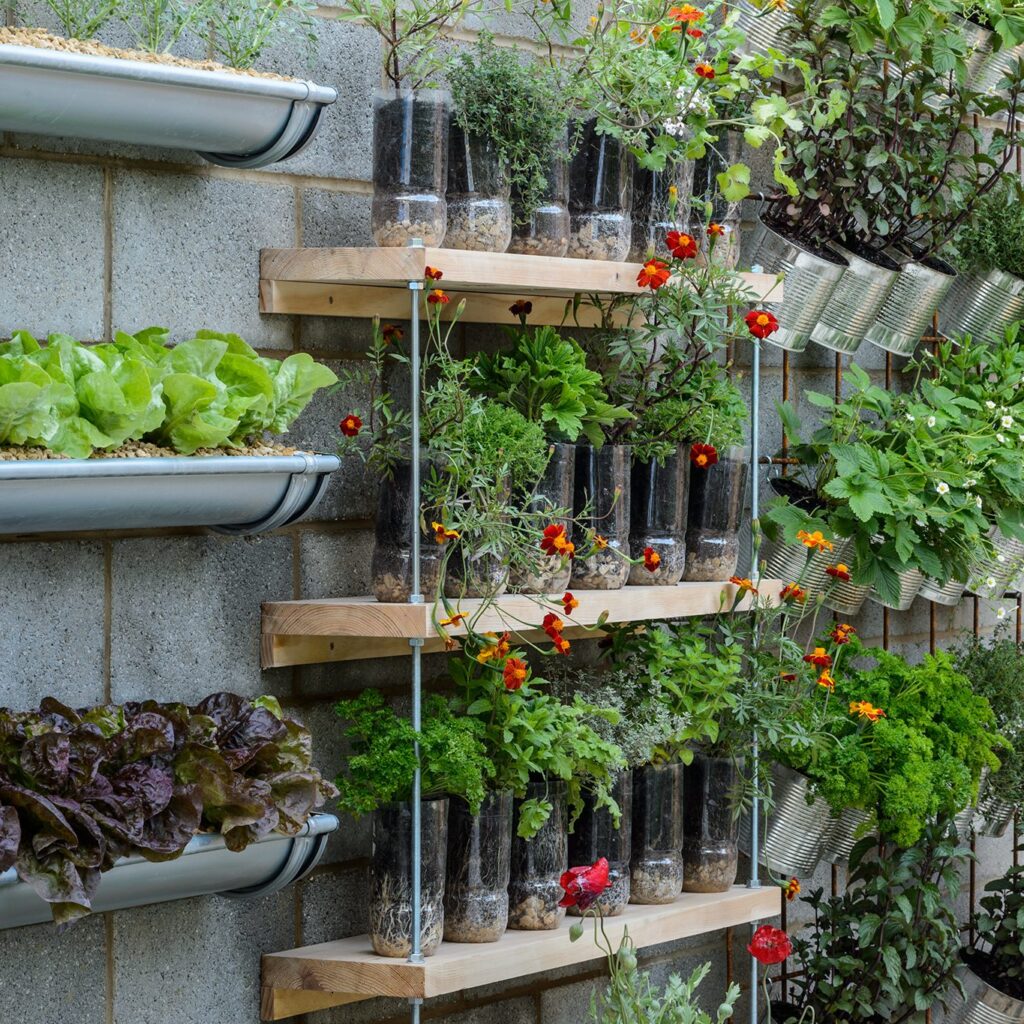
Step 3: Pick the Right Containers
Since balcony gardens rely on container planting, choosing the right pots is essential for plant health and style.
Types of Containers:
- Terracotta pots: Classic, breathable but dry out quickly.
- Plastic pots: Lightweight, retain moisture longer.
- Ceramic planters: Decorative but heavier.
- Fabric grow bags: Affordable and easy to move.
- Railing planters: Great for saving space.
- Vertical wall planters: Ideal for compact areas.
Important: Ensure containers have drainage holes to prevent waterlogging.
Step 4: Use Quality Potting Mix
Avoid using garden soil in containers, as it can compact and hinder plant growth. Instead, opt for:
- Good-quality, well-draining potting mix
- Specialized mixes for vegetables, herbs, or flowers.
- Add compost or organic manure to enrich the soil and improve water retention.
For plants like succulents or cacti, use a gritty, fast-draining mix.
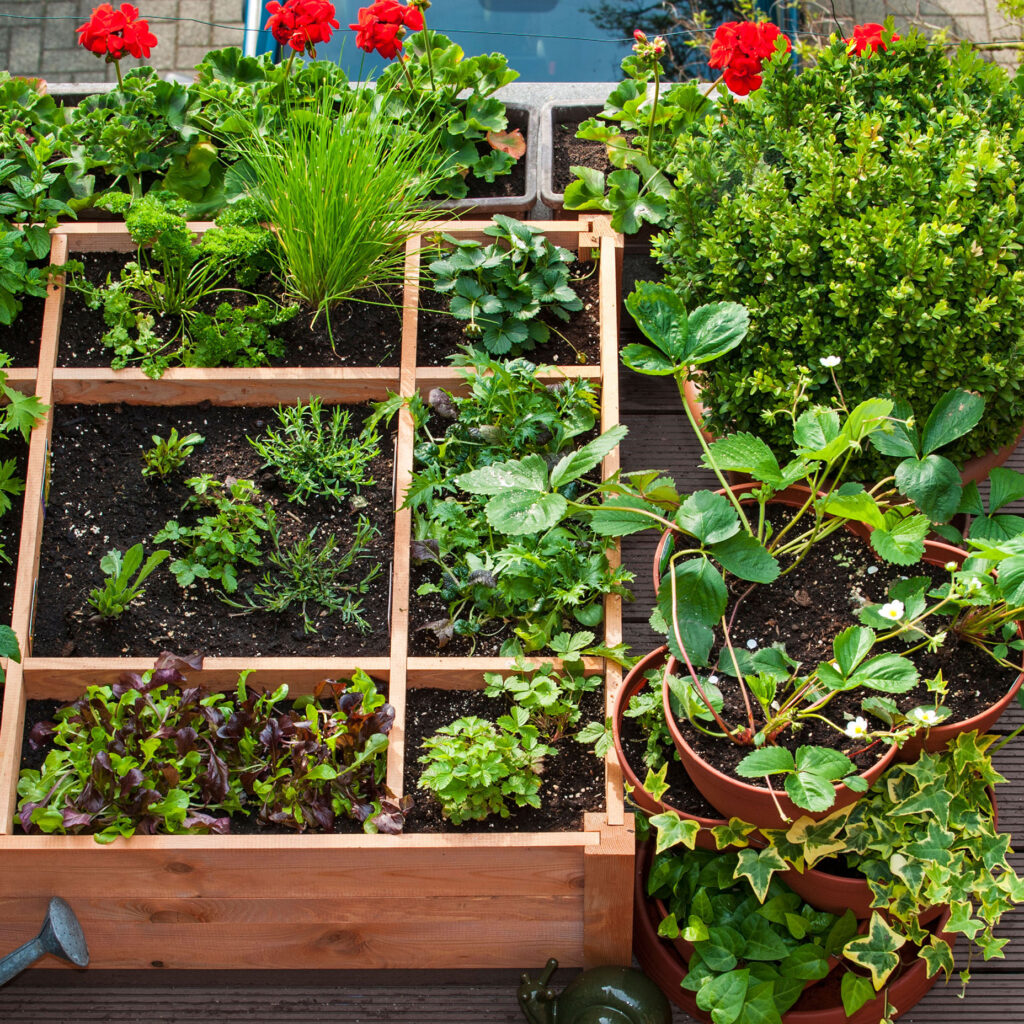
Step 5: Plan for Balcony Layout and Display
Organizing your plants smartly can make a small balcony appear lush and spacious.
Smart Layout Ideas:
- Use vertical space: Install wall-mounted shelves, hanging planters, or ladder stands.
- Place taller plants at the back and shorter ones in front.
- Mix trailing plants like ivy or money plant with upright varieties.
- Group plants by water and light requirements for easier care.
Add string lights, small seating, or a bistro table to create a cozy, inviting corner.
Step 6: Watering and Care
Balcony plants in containers dry out faster than garden soil, especially under direct sun.
Watering Tips:
- Check soil moisture daily — water when the top inch feels dry.
- Water deeply until it drains out the bottom.
- Use a watering can with a narrow spout for better control.
- Group thirsty plants together to simplify watering routines.
Mist humidity-loving plants on hot days and ensure wind-exposed balconies don’t dry out too quickly.

Step 7: Feed and Fertilize
Container plants need regular nutrients as water tends to leach out minerals.
- Use liquid fertilizer or slow-release pellets every 2–4 weeks.
- Choose organic options like compost tea, fish emulsion, or vermicompost for edibles.
- Reduce feeding in winter as plants’ growth slows down.
Step 8: Protect Plants from Pests
Even balcony gardens can attract pests like aphids, mealybugs, and whiteflies.
Natural Pest Control:
- Spray neem oil solution every 7–10 days.
- Introduce beneficial insects like ladybugs if possible.
- Wipe leaves with soapy water to deter bugs.
- Inspect plants regularly and remove affected leaves.
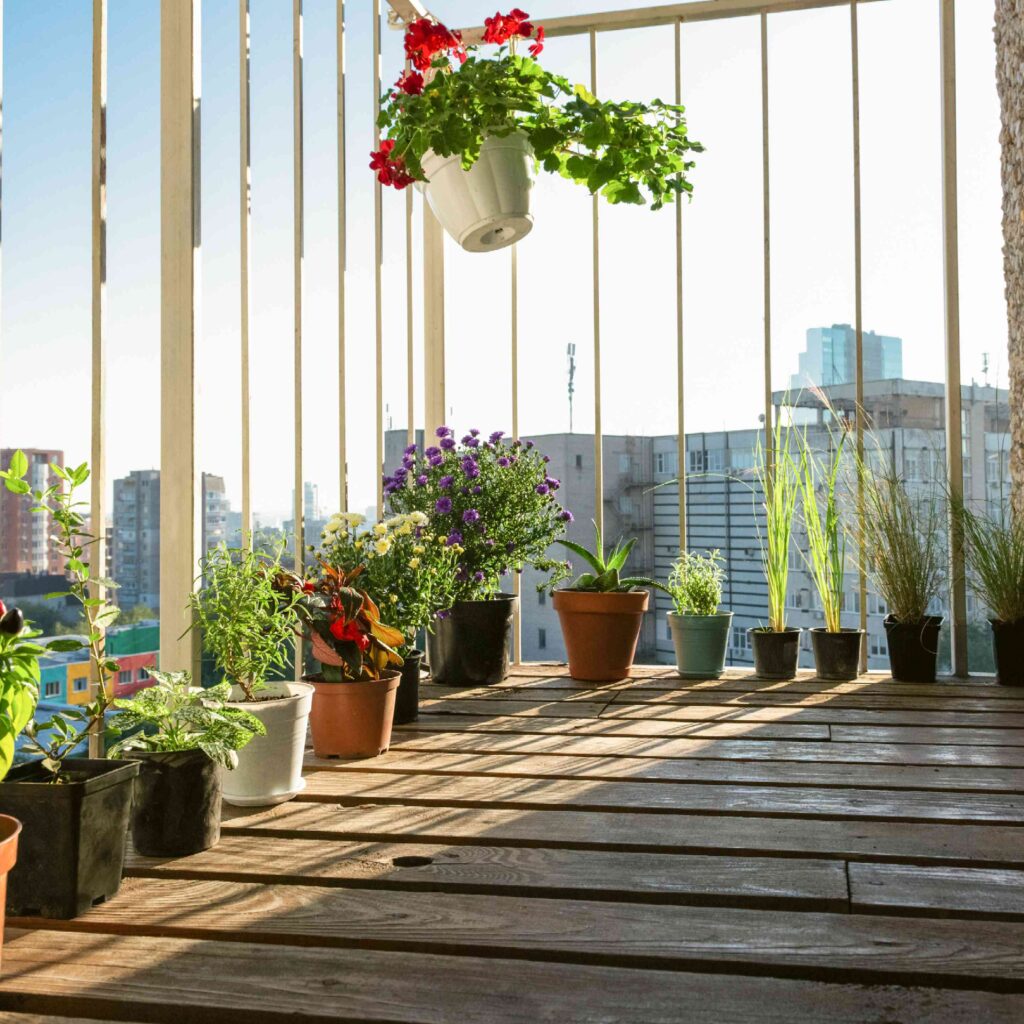
Step 9: Seasonal Maintenance
Adjust your balcony garden care with the changing seasons:
- In summer: Water more often, provide shade nets or move sensitive plants to shaded corners.
- In winter: Reduce watering, protect tropical plants from frost with covers or move them indoors.
- Spring and fall: Best time for sowing new seeds and repotting.
Creative Balcony Garden Ideas
Looking to make your space extra special? Here are some design inspirations:
- Vertical herb wall using hanging planters.
- Color-coordinated flower boxes along the railing.
- Succulent arrangements in teacups or shallow bowls.
- A reading nook surrounded by tall potted plants.
- Mini water feature or tabletop fountain for a serene vibe.

Final Thoughts
A balcony garden is more than just a decorative feature — it’s a personal, peaceful haven where you can unwind, grow fresh produce, and reconnect with nature in the heart of the city. With some careful planning, the right plants, and a little daily care, you can transform your balcony into a flourishing green escape.
Whether you’re craving the fragrance of fresh basil, the sight of colorful flowers, or the satisfaction of homegrown cherry tomatoes, your balcony garden can make it all possible.
So grab your gardening gloves, pick out your favorite plants, and start growing your balcony paradise today!
